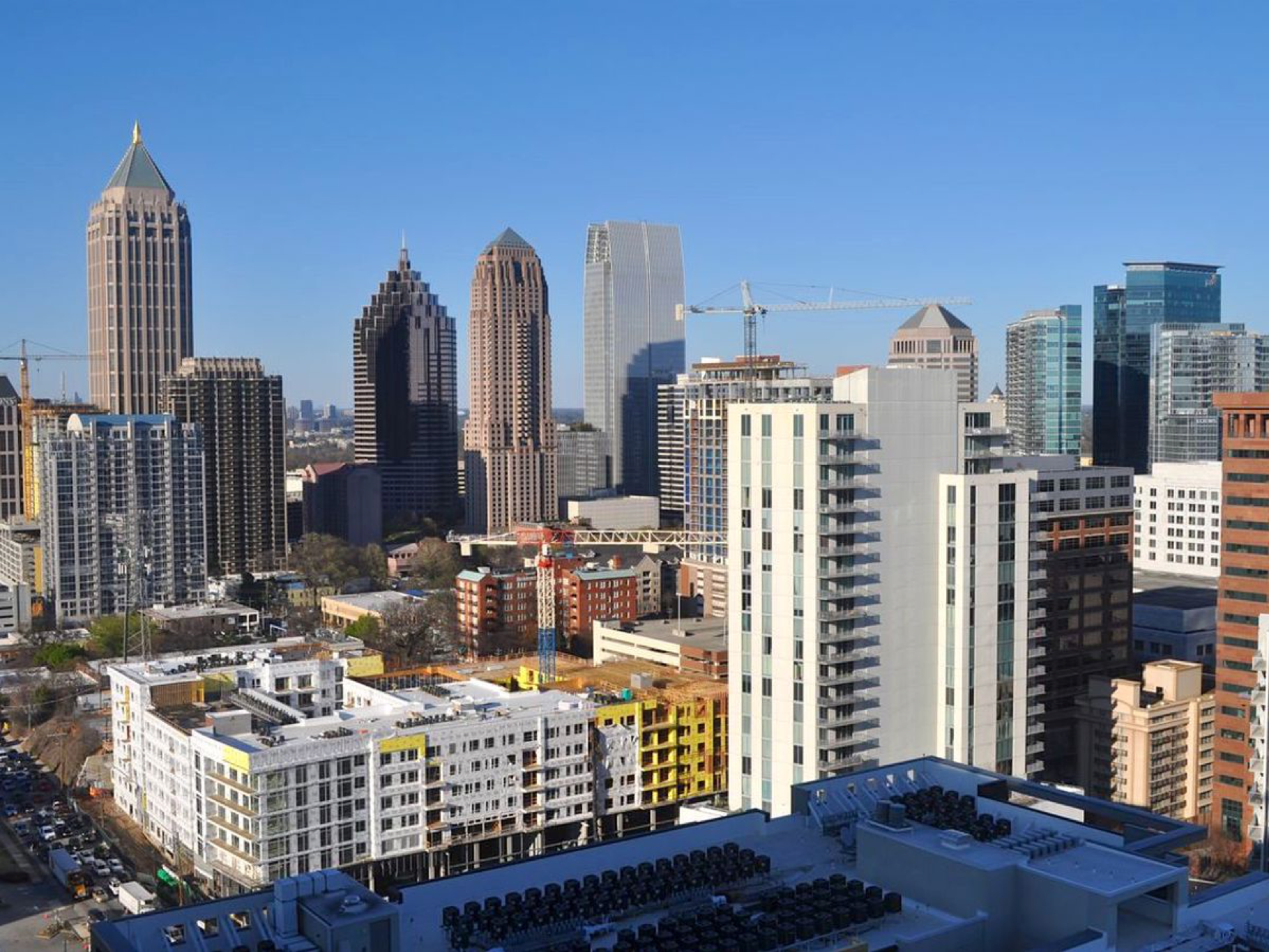On January 18th, 2018, when Amazon, Inc. announced its list of 20 finalists for hosting the company’s second North American headquarters, business leaders and policymakers around the state cheered at the inclusion of Atlanta in an official Amazon press release. While the tech giant cites its own figures in evaluating the fiscal impact of the second headquarters, or HQ2, including “over $5 billion in construction” and “as many as 50,000 high-paying jobs,” the economic realities faced by whichever city wins Amazon’s glorified extortion exercises will be far different than those outlined in the company’s glossy press releases.
Because of the alleged benefits of hosting Amazon’s second headquarters, the competition among states for this privilege has been fierce. In Georgia, the interactive marketing campaign known as “Prime Up ATL” has emerged as a leading advocate for Amazon to choose Atlanta as its next headquarters, led by Alex Membrillo, the C.E.O. of a local digital marketing firm. “Amazon has helped us in our daily lives, and now it’s our turn to return the favor,” he argues on the organization’s website. They seek to dispel fears of rising rents and increased roadway congestion by claiming that the firm will “increase funding for our education system and potentially revamp MARTA.” Tellingly, these claims are not sourced to any actual proposals, from Amazon or any other third party.
Efforts to lure Amazon to Atlanta have even spread to college campuses around the state, with undergraduate students at Emory’s Goizueta School of Business launching the #WhyAtlanta campaign, which invited students to post a one- to two-minute video of themselves explaining why Atlanta is the right choice for Amazon’s HQ2. According to the group’s Facebook page, winners of the competition will have the opportunity to mingle with “high-level government and corporate officials” who are affiliated with the city’s bid for HQ2. The campaign was co-opted by our own Student Government Association via an ArchNews e-mail blast that was delivered to students on March 7th.
Notably absent from these sales pitches is a sober and holistic evaluation of the real economic impact Amazon’s HQ2 would have on Atlanta’s current residents. For starters, the city is ill-equipped to provide housing for over 50,000 new residents. Efforts to accommodate these newcomers would be an insurmountable demand strain on a city that’s already seen its supply of low-income housing drop by 5 percent annually since 2012. Increased real estate development in neighborhoods such as Inman Park and Cabbagetown have done little to improve the economic circumstances of those who live there, instead driving many low-income renters into subsidized housing located elsewhere in the city while luxury apartments cater to new, high-income residents. Since 2010, the Atlanta Housing Authority has been providing public housing to over 50,000 residents through the Section 8 Moderate Rehabilitation Program in order to meet rising demand for low-income housing. In Old Fourth Ward alone, a neighborhood on the city’s east side home to Ponce City Market and other attractions, rents have risen 59 percent in the past decade alone.
Even if the arrival of Amazon somehow spurs enough real estate investment to meet the rapidly-growing demand for housing in Atlanta, a historic feat in and of itself, the public has no reason to believe that these new locations would accommodate anyone other than high-income renters, who already have a plethora of options in and around the city to choose from. It is the low-income renters of Atlanta who would be most affected by HQ2, a phenomena the city witnessed once already when the development and opening of Mercedes-Benz Stadium hollowed out the city’s Westside and Vine City neighborhoods by accepting millions in tax breaks and driving up rents more than 20 percent.
Aside from the negative economic repercussions of Amazon’s arrival, which go far beyond housing and into the realms of public education and social mobility in general, the business practices of the tech giant are morally repugnant. In a February 2018 article from the Atlantic, workers described the conditions inside a packaging facility in San Bernardino, California as being “like the Hunger Games.” Workers are often pitted against each other to meet unrealistic packaging goals while earning scant wages, and “Power Hours” are held where employees compete tirelessly against each other for prizes such as “a cookie or a gift card.” The employee, who spoke to the Atlantic under the condition of anonymity for fear of being fired, later told the reporter “I don’t want a cookie or a gift card. I’ll take it, but I’d rather a living wage.”
While the benefits of Amazon’s presence are decidedly fuzzy and difficult to allocate, the negative effects it would have on Atlanta’s low-income communities are crystal clear: rising rents, underfunded schools, continued under-investment in public infrastructure.
Even beyond the packaging warehouses that have sprouted up like weeds around the country, labor conditions in the company’s corporate offices are equally grueling. A 2015 article from the New York Times quoted a former employee whose most “enduring image was watching people weep in the office” due to the psychologically-traumatizing conditions set forth by Amazon’s corporate leadership. The same article also highlighted a warehouse in Pennsylvania where, rather than install air conditioning inside the newly-repurposed building, ambulances waited outside to transfer employees to the local hospital in case of heat exhaustion. Only after a local news report exposed this practice did Amazon make the necessary changes.
Still, a proposal for Amazon HQ2 has been delivered that former Mayor Kasim Reed called “the most aggressive economic attraction package that the state of Georgia has ever put forward.” While the details of the proposal have so far been hidden from the public, the taxpayer-funded incentives from the state have reportedly totaled over $1 billion.
What this ultimately means for the city of Atlanta, should Amazon choose it as the location for its second North American headquarters, is the hollowing out of the city’s urban core by an increasingly plutocratic state government. The millions of dollars forfeited in taxes would otherwise surely benefit Atlanta Public Schools, who last year faced a $12 million budget shortfall and were forced to add two additional furlough days, where teachers must come to work but receive no pay. Moreover, the city’s infrastructure faces a severe lack of funding as well. MARTA has been consistently underfunded since its inception in the 1960’s, and a bridge collapse last year on Interstate-85 highlighted the fragile nature of the city’s decades-old highway system. The culmination of these factors highlights the reality that putting an additional $1 billion revenue shortfall on the state’s books would only exacerbate existing fiscal issues faced by the state.
A thorough analysis of the economic impact of Amazon’s arrival in Atlanta exposes the real winners and losers of the race for HQ2. While the politicians and developers who support the movement will reap the benefits of Amazon’s entry into the Atlanta business scene, these gains will undoubtedly come at the expense of the city’s working- and lower-class, a group that’s already shouldered most of the burden as Georgia transitions into what Republican governor Nathan Deal calls “the No. 1 state in the nation in which to do business.”


